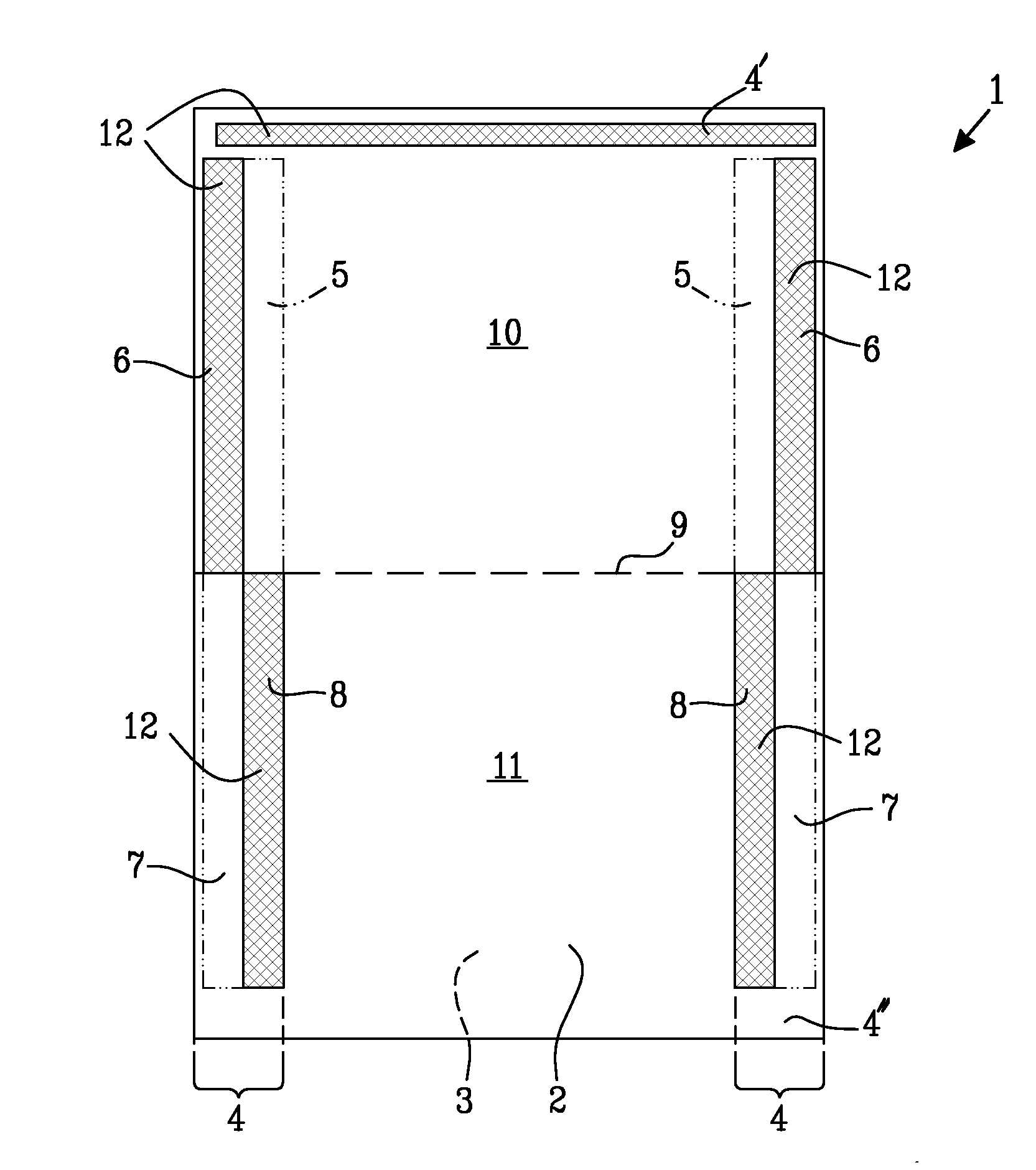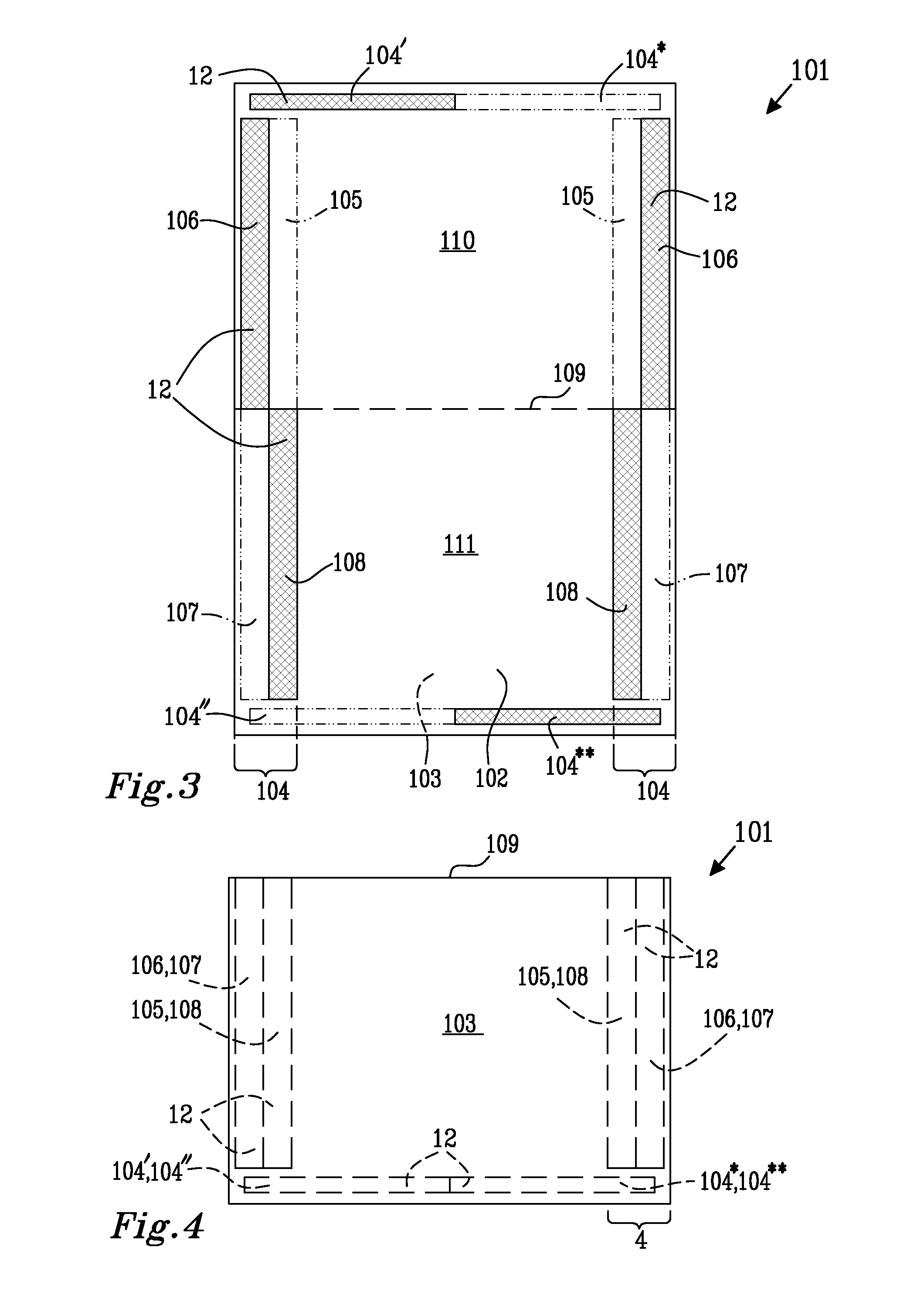Packaging unit having improved sealing properties
a packaging unit and sealing technology, applied in the field of packaging units, can solve the problems of not being able to form a tight disposal package, not being able to form a tightly sealed package, and requiring an additional amount of material, so as to eliminate the risk of staining and odour, and be easy to unfold and reseal.
- Summary
- Abstract
- Description
- Claims
- Application Information
AI Technical Summary
Benefits of technology
Problems solved by technology
Method used
Image
Examples
Embodiment Construction
[0055]FIG. 1 depicts a packaging unit 1 for hygiene articles according to an embodiment of the present invention. The packaging unit is formed from a sheet of material having an inner surface 2 and an outer surface 3, the inner surface comprising an edge zone 4 comprising an inner edge portion 5, 8 and an outer edge portion 6, 7. The packaging unit 1 also comprises a transverse edge portions 4′ and 4″. The sheet has a folding axis 9, wherein the folding axis divides the sheet into a first region 10 and a second region 11. As shown in FIG. 1, the outer edge portion 6 of the edge zone 4 of the first region 10 is provided with adhesive 12, while the inner edge portion 5 of the edge zone 4 of the first region 10 is adhesive-free. Further, the inner edge portion 8 of the edge zone 4 of the second region 11 is provided with adhesive 12, while the outer edge portion 7 of the edge zone 4 of the second region 11 is adhesive-free. Also, the transverse edge portion 4′ of the first region 10 is...
PUM
| Property | Measurement | Unit |
|---|---|---|
| length | aaaaa | aaaaa |
| shape | aaaaa | aaaaa |
| width | aaaaa | aaaaa |
Abstract
Description
Claims
Application Information
 Login to View More
Login to View More - R&D
- Intellectual Property
- Life Sciences
- Materials
- Tech Scout
- Unparalleled Data Quality
- Higher Quality Content
- 60% Fewer Hallucinations
Browse by: Latest US Patents, China's latest patents, Technical Efficacy Thesaurus, Application Domain, Technology Topic, Popular Technical Reports.
© 2025 PatSnap. All rights reserved.Legal|Privacy policy|Modern Slavery Act Transparency Statement|Sitemap|About US| Contact US: help@patsnap.com



